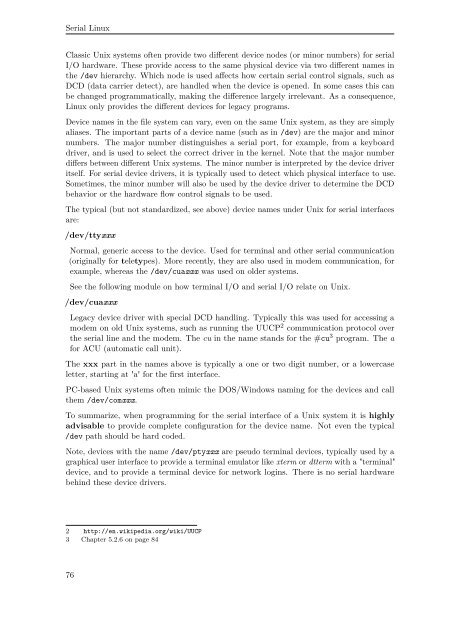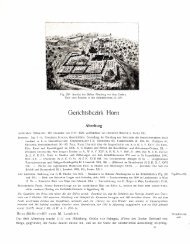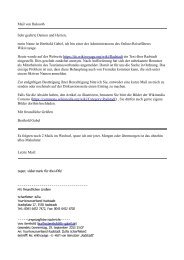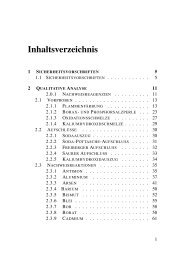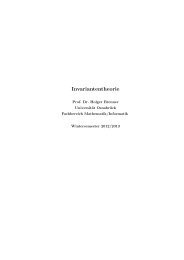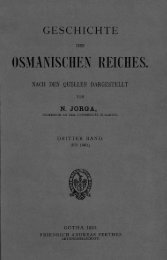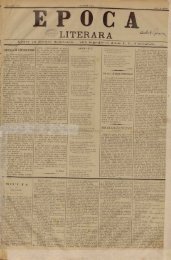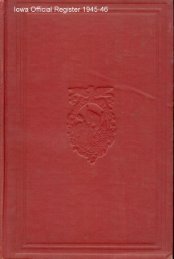Serial Programming - upload.wikimedia....
Serial Programming - upload.wikimedia....
Serial Programming - upload.wikimedia....
Create successful ePaper yourself
Turn your PDF publications into a flip-book with our unique Google optimized e-Paper software.
<strong>Serial</strong> Linux<br />
Classic Unix systems often provide two different device nodes (or minor numbers) for serial<br />
I/O hardware. These provide access to the same physical device via two different names in<br />
the /dev hierarchy. Which node is used affects how certain serial control signals, such as<br />
DCD (data carrier detect), are handled when the device is opened. In some cases this can<br />
be changed programmatically, making the difference largely irrelevant. As a consequence,<br />
Linux only provides the different devices for legacy programs.<br />
Device names in the file system can vary, even on the same Unix system, as they are simply<br />
aliases. The important parts of a device name (such as in /dev) are the major and minor<br />
numbers. The major number distinguishes a serial port, for example, from a keyboard<br />
driver, and is used to select the correct driver in the kernel. Note that the major number<br />
differs between different Unix systems. The minor number is interpreted by the device driver<br />
itself. For serial device drivers, it is typically used to detect which physical interface to use.<br />
Sometimes, the minor number will also be used by the device driver to determine the DCD<br />
behavior or the hardware flow control signals to be used.<br />
The typical (but not standardized, see above) device names under Unix for serial interfaces<br />
are:<br />
/dev/ttyxxx<br />
Normal, generic access to the device. Used for terminal and other serial communication<br />
(originally for teletypes). More recently, they are also used in modem communication, for<br />
example, whereas the /dev/cuaxxx was used on older systems.<br />
See the following module on how terminal I/O and serial I/O relate on Unix.<br />
/dev/cuaxxx<br />
Legacy device driver with special DCD handling. Typically this was used for accessing a<br />
modem on old Unix systems, such as running the UUCP 2 communication protocol over<br />
the serial line and the modem. The cu in the name stands for the #cu 3 program. The a<br />
for ACU (automatic call unit).<br />
The xxx part in the names above is typically a one or two digit number, or a lowercase<br />
letter, starting at 'a' for the first interface.<br />
PC-based Unix systems often mimic the DOS/Windows naming for the devices and call<br />
them /dev/comxxx.<br />
To summarize, when programming for the serial interface of a Unix system it is highly<br />
advisable to provide complete configuration for the device name. Not even the typical<br />
/dev path should be hard coded.<br />
Note, devices with the name /dev/ptyxxx are pseudo terminal devices, typically used by a<br />
graphical user interface to provide a terminal emulator like xterm or dtterm with a "terminal"<br />
device, and to provide a terminal device for network logins. There is no serial hardware<br />
behind these device drivers.<br />
2 http://en.wikipedia.org/wiki/UUCP<br />
3 Chapter 5.2.6 on page 84<br />
76


